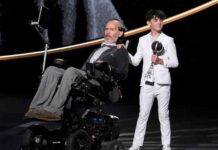Science Corporation recently released preliminary data from a clinical trial of a retina implant that has shown promising results. This implant has partially restored vision to individuals with holes or blurry spots in their central visual field. Participants in the trial were able to read text and recognize playing cards, even though they were legally blind.
Ophthalmologist Frank Holz, the scientific coordinator of the trial, described these results as a significant milestone in treating severe vision loss caused by age-related macular degeneration. This condition affects a large number of people in the United States, with an estimated 20 million individuals suffering from it. It is the leading cause of severe vision loss in people aged 50 and above, and the aging population is likely to exacerbate this issue.
The implant system includes an implant, a camera mounted on glasses, and a pocket computer. The glasses capture infrared light from the surroundings and transmit it to the subretinal implant, which contains 400 thin panels. These panels stimulate the retina with electrical impulses, mimicking the natural process of vision formation.
Following a 12-month trial period, participants experienced significant improvements in visual acuity. On average, they were able to read almost five more lines on the eye chart, equivalent to an improvement from 20/320 to 20/200. While some experts have raised concerns about the methodology of the study, many are optimistic about the potential of this technology.
The research behind this implant is based on the work of Stanford University ophthalmologist Daniel Palanker, a pioneer in optical technology. Science Corporation is now working on developing the next generation of this implant, with plans to release a more detailed analysis of the trial data soon. The company is also seeking regulatory approval in Europe and expanding trials in the United States.
CEO Max Hodak expressed his excitement about the future of this technology, highlighting its significant impact on patients. He believes that within a decade, this device could become widely used and improve the lives of many individuals with severe vision loss. The company is also exploring other brain-computer interface technologies to further enhance the functionality of the implant.
Overall, the results of this trial offer hope for individuals suffering from age-related macular degeneration and other vision-related conditions. As technology continues to advance, there is a possibility of more effective treatments and solutions for those with severe vision impairments. The intersection of science and medicine is paving the way for groundbreaking innovations that have the potential to change the lives of millions of people around the world.

















